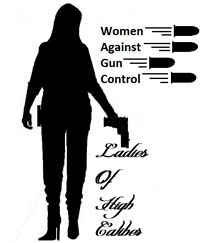[In Europe] Self Defense: Antigun Laws Haven’t Worked
No surprises here, but good press nonetheless. Contrast this version
with the WSJ USA version and you’ll discover the stateside editors have
carved this piece up a bit. Odd.
==========
Wall Street Journal Europe
April 30, 2002
COMMENTARY
Self Defense: Antigun Laws Haven’t Worked
By John R. Lott, Jr.
European gun laws have everything American gun control proponents
advocate. Yet, the three very worst public shootings in the last year
all occurred in Europe. Indeed around the world, from Australia to
England, countries that have recently strengthened gun control laws with
the promise of lowering crime have instead seen violent crime soar.
Sixteen people were killed during last Friday?s public school shooting
in Germany. Compare that to the United States with almost five times as
many students, where 32 students and
four teachers were killed from any type of gun death at elementary and
secondary schools from August 1997 through February 2002, almost five
school years. This total includes not only much publicized public school
shootings but also gang fights, robberies, accidents. It all corresponds
to an annual rate of one student death per five million students and one
teacher death per 4.13 million teachers.
In Europe shootings have not been limited to schools, of course. The
other two worst public shootings were the killing of 14 regional
legislators in Zug, a Swiss canton, last September and the massacre of
eight city council members in a Paris suburb last month.
So one must automatically assume that European gun laws are easy. Wrong.
Germans who wish to get hold of a hunting rifle must undergo checks that
can last a year, while those wanting a gun for sport must be a member of
a club and obtain a license from the police.
The French must apply for gun permits, which are granted only after an
exhaustive background and medical record check and demonstrated need.
After all that, permits are only valid for three years.
Even Switzerland’s once famously liberal laws have become tighter. In
1999 Switzerland’s federation ended policies in half the cantons where
concealed handguns were unregulated
and allowed to be carried anywhere. Even in many cantons where
regulations had previously existed, they had been only relatively
liberal. Swiss federal law now severely limits permits
only to those who can demonstrate in advance a need for a weapon to
protect themselves or others against a precisely specified danger.
All three killing sprees shared one thing in common: they took place in
so-called gun-free “safe zones.” The attraction of gun-free zone is
hardly surprising as guns surely make it
easier to kill people, but guns also make it much easier for people to
defend themselves. Yet, with “gun-free zones,” as with many other gun
laws, it is law-abiding citizens, not would-be criminals, who obey them.
Hence, these laws risk leaving potential victims defenseless.
After a long flirtation with “safe zones,” many Americans have learned
their lesson the hard way. The U.S. has seen a major change from 1985
when just eight states had the most liberal right-to-carry laws–laws
that automatically grant permits once applicants pass a criminal
background check, pay their fees, and, when required, complete a
training class. Today the total is 33 states. Deaths and injuries from
multiple-victim public shootings, like the three in Europe, fell on
average by 78% in states that passed such laws.
The lesson extends more broadly. Violent crime is becoming a major
problem in Europe. While many factors, such as law enforcement, drug
gangs, and immigration, affect crime, the lofty promises of gun
controllers can no longer be taken seriously.
In 1996, the U.K. banned handguns. Prior to that time, over 54,000
Britons owned such weapons. The ban is so tight that even shooters
training for the Olympics were forced to travel to other countries to
practice. In the four years since the ban, gun crimes have risen by an
astounding 40%. Dave Rogers, vice chairman of London’s Metropolitan
Police Federation, said that the ban made little difference to the
number of guns in the hands of criminals. . . . “The underground supply
of guns does not seem to have dried up at all.”
The United Kingdom now leads the United States by a wide margin in
robberies and aggravated assaults. Although murder and rape rates are
still higher in the United States, the difference is shrinking quickly.
Australia also passed severe gun restrictions in 1996, banning most guns
and making it a crime to use a gun defensively. In the subsequent four
years, armed robberies rose by 51%, unarmed robberies by 37%, assaults
by 24%, and kidnappings by 43%. While murders fell by 3%, manslaughter
rose by 16%.
Both the U.K. and Australia have been thought to be ideal places for gun
control as they are surrounded by water, making gun smuggling relatively
difficult. Of course, advocates of gun
control look for ways to get around any evidence. Publications such as
the New York Times and the Los Angeles Times blame Europe’s increasing
crime problems on a seemingly unstoppable black market that “has
undercut . . . strict gun-control laws.” Let’s say that’s the case–even
then, these gun laws clearly did not deliver the promised reductions in
crime.
It is hard to think of a much more draconian police state than the
former Soviet Union, yet despite a ban on guns that dates back to the
communist revolution, newly released data suggest that the “worker’s
paradise” was less than the idyllic picture painted by the regime in yet
another respect: murder rates were high. During the entire decade from
1976 to 1985 the Soviet Union’s homicide rate was between 21% and 41%
higher than that of the United States. By 1989, two years before the
collapse of the Soviet Union, it had risen to 48% above U.S. rate.
In fact, the countries with by far the highest homicide rates have gun
bans. Many popular discussions cherry pick a half dozen or so countries
and fail to account for any other
factors that determine crime. But research such as Jeff Miron’s
forthcoming paper in the U.S. Journal of Law and Economics examines data
for all the available countries and finds that countries with stricter
gun control tend to have higher homicide rates.
While Friday?s shooting in Germany was followed later that same day with
the passage of even stricter gun laws, increased crime in Europe is
causing new center-right governments to rethink the previous approach of
having reflexive support for more anti-gun laws. Just last week Italian
Defense Minister Antonio Martino suggested that Italy model its laws
after the U.S.’s 2nd Amendment, which protects the right of citizens to
bear arms.
The growing fears of crime may have been responsible for Jean-Marie Le
Pen’s upset second place showing in France’s presidential elections. As
58-year-old mother of two in France said: “my son was last week
mugged–just for a cigarette! I’ve never done this before and you may
not like to hear it, but I’m voting for Le Pen.”
Hopefully this will be only an aberration and the response will be more
along the lines offered by the libertarian Mr. Martino. The way to curb
crime is by enabling decent, law-abiding citizens to defend themselves.
Mr. Lott is a resident scholar at the American Enterprise Institute and
the author of More Guns, Less Crime (University of Chicago Press, 2000).



